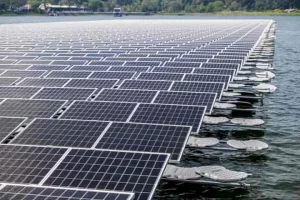Climate Change is knocking on your doors. It is your next-door neighbour now and it isn’t going to go away soon. More importantly, it has started impacting India significantly.
Centre for Science and Environment’s annual report on ‘State of India’s Environment 2023’ should start the alarm bells ringing as it probes how Climate Change is impacting India, now, visibly.
The first visible impact is ‘Extreme Weather’. According to the CSE report, India experienced extreme weather events on 271 of the 304 days from January 1 to October 31, 2022. These events claimed 2952 lives and damaged 1.8 million hectares(ha)crop area.
Winter
According to the CSE report, “38 of the 59 days saw extreme weather events, spread across 21 states and union territories. Uttar Pradesh saw extreme events on 25 days, followed by Madhya Pradesh(24 days) and Punjab(15 days). The country experienced its third wettest January since 1951. Yet, most of Maharashtra, Karnataka and Kerala, recorded deficit rainfall. This surprising because central and southern regions were wetter than normal. The crop area affected by these events was 33184 ha and 22 people lost their lives due to these extreme weather events during winter.
Pre-Monsoon
81 of the 92 days between March and May saw extreme weather events, spread across 31 states and UTs. Rajasthan and Assam saw extreme weather events on 36 days followed by Himachal Pradesh and Madhya Pradesh(32 days each). Unusually hot March and April led to early onset of heatwaves. The country reported heatwaves on 51 days. While the temperature ws normal in May 2022, it did experience an unusual heavy rainfall. During the pre-monsoon season, 302 people died due to extreme weather events and 13.169 ha crop area was affected.
Monsoon
During 2022, all the 122 days between Juneand September saw extreme weather events, spread across 34 states and UTs. Assam saw extreme events on 95 days, followed by Madhya Pradesh(85 days) and Maharashtra(80 days). While the overall monsoon was normal, rainfall fluctuated between deficit and excess throughout the season. At the end of the season 188 districts (27% of districts in the country) received deficient rainfall, while seven districts received large deficient rainfall (60-99% less than normal). The consequence of these extreme weather events during the monsoon was deaths of 2431 people and 1,797,190 ha crop area was affected.
Post-monsoon
In the post-monsoon period during 2022, 30 of the 31 days in October saw extreme weather events spread across 30 states and UTs. Uttar Pradesh experienced extreme weather events on 19 days, followed by Maharashtra(13 days). The Northwest region, which saw the bulk of the extreme weather days, experienced its seventh-wettest October since 1901. The region saw extreme weather events on 21 days of the month. The crop area affected by these events was 45,388 ha and 197 persons lost their lives.
Climate Hotspots
The report brings out the fact that nearly 45 per cent of India’s forest and tree cover is all set to emerge as ‘climate hotspots’ by 2030; 64 per cent of the forest and tree cover may face ‘high severity’ of climate change by 2050. In terms of area this would mean nearly 315, 667 sq. km and 448367 sq km respectively.
A ‘climate hotspot’ is an area expected to be adversely impacted by climate change, while ‘high severity’ means that the green cover is expected to see a rise in temperature between the ranges of 1.5 and 2.1 degree Celsius. These hotspots would also witness a change in rainfall patterns with an increase or decrease of 20 to 26 per cent. This data is based on the findings on the Indian State of Forest’s Report 2021. The report goes on to predict that the Himalayan states and UTs – Ladakh, Jammu and Kashmir, Himachal Pradesh and Uttarakhand- will record the maximum increase in the temperatures and also possibly experience a decrease in rainfall. However, extreme rainfall may increase in the states of the north-east.
Jal Jeevan Mission: Departure from the past
The CSE report has appreciated the ‘Jal Jeevan Mission’ programme of Modi government that aims at providing safe drinking water for rural India. The report says that this scheme that was announced by Prime Minister Narendra Modi from the ramparts of the RedFort on 15 August, 2019 has addressed some of the key issues that plagued the earlier such initiatives by previous governments.
“The programme has a robust dashboard where centralised progress of the scheme is pushed out for the general public. This much needed step helps villages understand how other villages are progressing and can play a major role in encouraging villages to take action. The dashboard maps every village with water sources, water treatment plants, purification plants, storage facilities, delivery network and community sanitary complex,” says the report.
It adds, “The scope of the programme (Jal Jeevan Mission) also includes preparedness for “natural disasters or unforeseen challenges,” implement on a case by case basis bulk water transfers to the villages and set up treatment plants and distribution systems. It also talks of bringing in technological interventions to supply safe water wherever water quality is an issue, and undertake greywater management.”
The CSE report underlines a significant trend that at the global level, the year 2022 would be known for ‘the reversal of gains when it comes to energy transition.’ One of the key reasons is Russia-Ukraine war that made the West realise that Europe is too dependent on Russia to fulfil its energy needs. And it is the West again that is the culprit amidst all the big talk that they do about climate change trying to teach the developing world how they should live and grow. Sunita Narain, Director of CSE, puts it quite scathingly in her opening remarks in the report, “This year, in spite of all the rhetoric and big talk, the already developed world has gone back to “drill baby drill.”




















